
Compact, energy efficient high power density motors and transmission systems require lubricants having lower viscosity with adequate temperature and shear stability. Traction and Stribeck friction are key performance indicators for high performance lubricants and can be represented in a 3D plot with slide-roll ratio (SRR) and entrainment velocity as the two axis (Figure 1). Note that that is at a fixed contact pressure and lubricant temperature showing the EHD and boundary lubrication at the extremes. In this study, Traction at a fixed entrainment speed of 3 m/sec and Stribeck friction at a fixed SRR of 0.25 was evaluated for a commercial oil using Ducom Twin Disc Tribometer.

Figure 1. 3D characteristic lubricant friction as a function of SRR and entrainment. Dotted line shows characteristic Traction at 3 m/sec entrainment speed (brown) and Stribeck friction at 0.25 SRR (blue).
Materials and Method (Traction)
Ducom Twin Disc RoR 2.0 (Figure 2a) features embedded friction force and multi-axis vibration. A friction force sensor is connected to the roller housing assembly. This eliminates parasitic friction of the support bearings and ensures true measurement of contact friction (Figure 2b). A recirculating lubricant supply with inline filter delivers heated lubricants to the rolling-sliding contact. A unique multi-nozzle arrangement ensures that both discs were also wetted with lubricant thereby ensuring bulk isothermal conditions (Figure 2c). A programmable servo-loading ensures accurate load stability during the test. Speed (from 0.1 to 3000 rpm) and direction of rotation for both discs can be independently controlled using two high performance drives.
 Figure 2a. Ducom twin disc RoR 2.0 Figure 2b. Vibration, friction sensors Figure 2c. Twin disc line contact with lubricant delivery
Figure 2a. Ducom twin disc RoR 2.0 Figure 2b. Vibration, friction sensors Figure 2c. Twin disc line contact with lubricant delivery
Lapped discs (surface roughness < 0.08 µm) with a line contact width of 3 mm were used (Figure 3c). A commercial 20W50 oil was tested. Traction tests were conducted at 1 kN and 4 kN corresponding to 1 GPa and 2 GPa Hertzian pressure, the latter representing extreme pressure conditions typical of EV transmission systems (Table 3a). Tests were done under varying slide-roll ratio and fixed positive entrainment velocity. The stepped speed profile for both discs is shown (Table 3b).
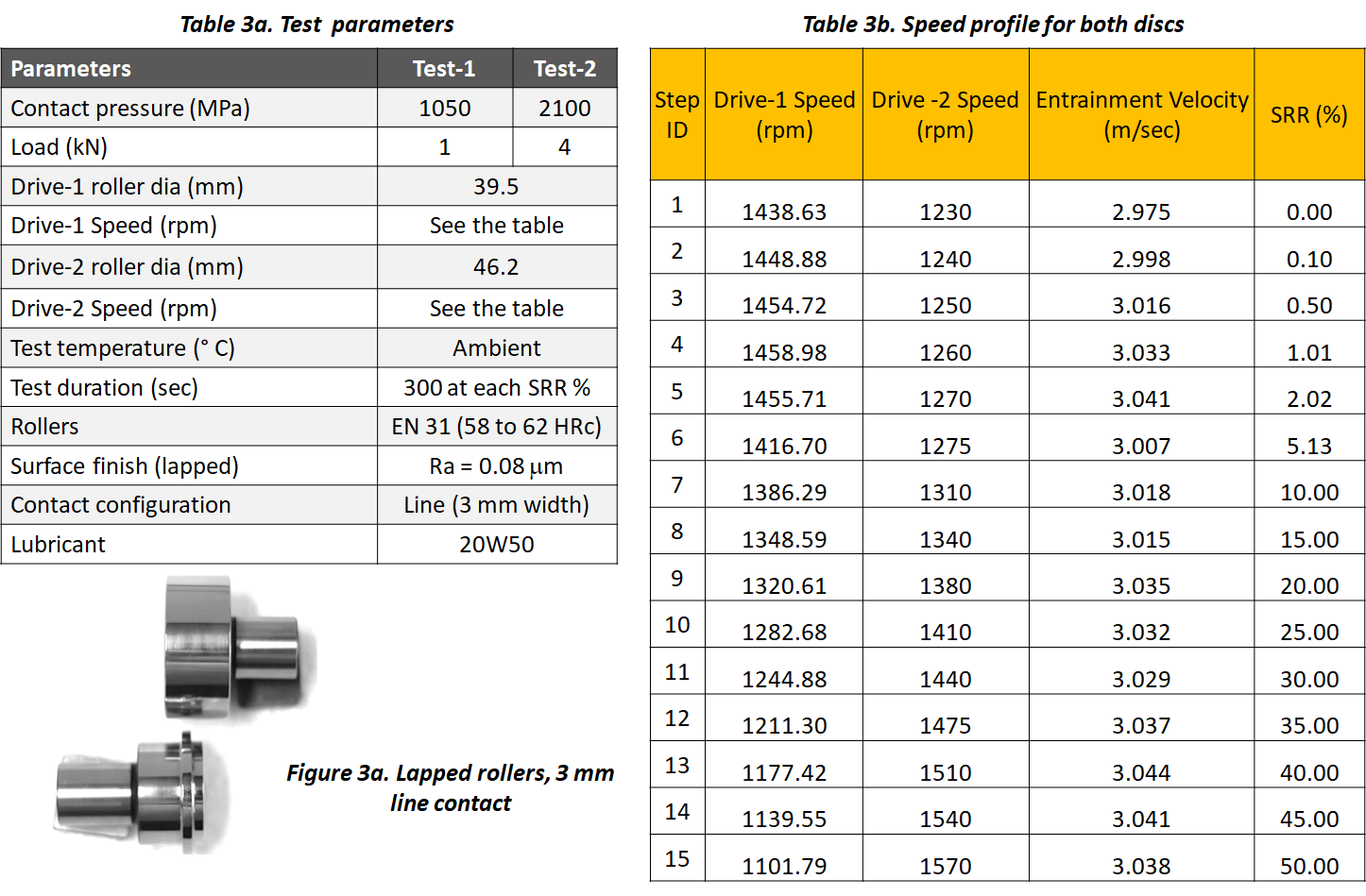
Table 3a. Traction test parameters Table 3b. Speed profile for both discs. Figure 3c. Lapped disc with 3 mm line contact
Load, speed, %slip and entrainment velocity are shown in (Figure 4). Entrainment velocity was constant at 3 m/sec while % slip increased from 0 to 40%.
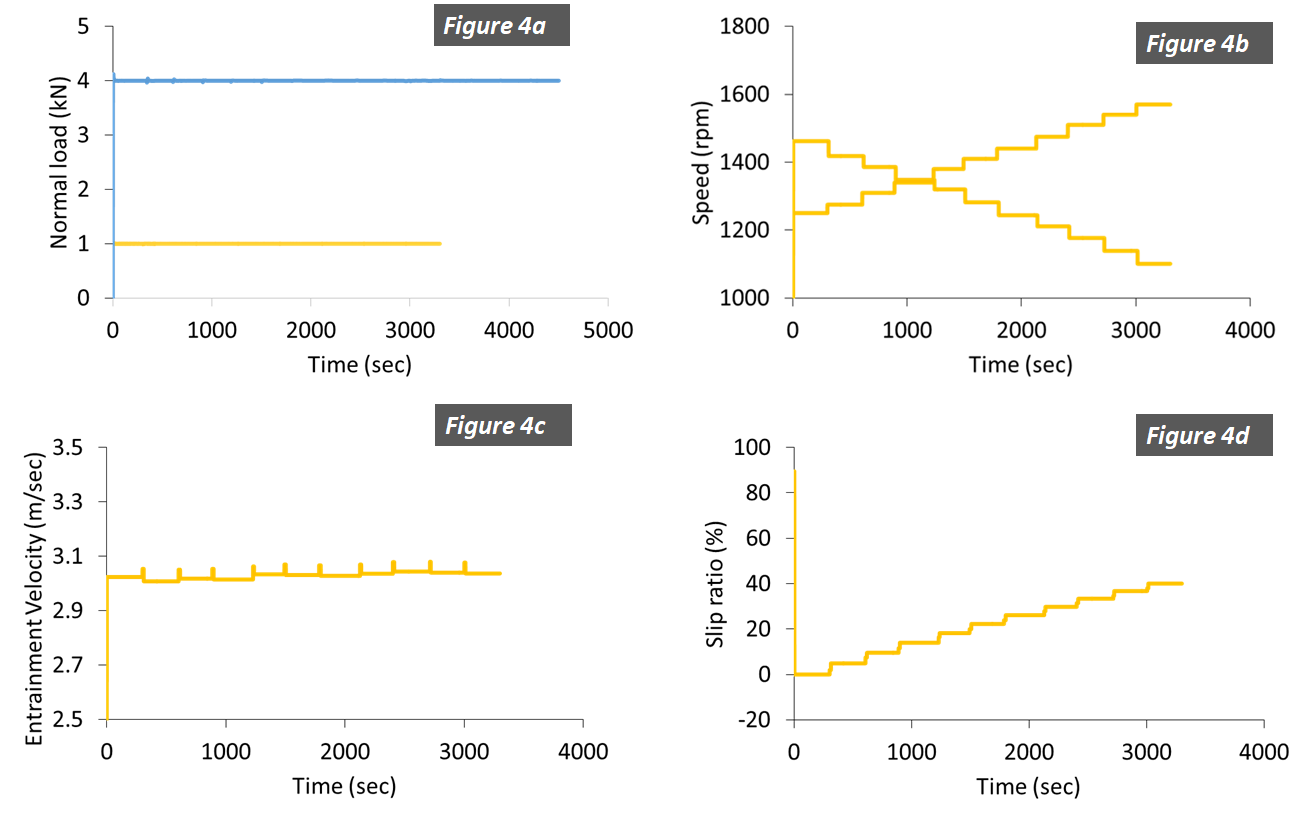 Figure 4a. Constant loads of 1 kN and 4 kN Figure 4b. Speed profiles of discs, one increasing and another decreasing Figure 4c. Constant entrainment velocity, 3 m/sec Figure 4d. Increasing slip ratio, 0 to 40%
Figure 4a. Constant loads of 1 kN and 4 kN Figure 4b. Speed profiles of discs, one increasing and another decreasing Figure 4c. Constant entrainment velocity, 3 m/sec Figure 4d. Increasing slip ratio, 0 to 40%
Tests were conducted at ambient and lubricant temperature (Figure 5, inset) at the exit was monitored alongwith traction coefficient under both 1 GPa and 2 GPa contact pressures (Figure 5).
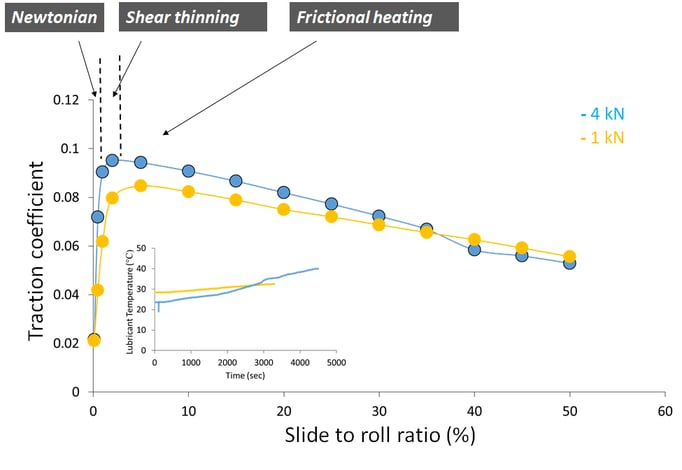 Figure 5. Traction coefficients at 1 kN and 4 kN and Figure 5 (inset) lubricant exit temperature at 1 kN and 4 kN. Different regimes within the traction curve are marked.
Figure 5. Traction coefficients at 1 kN and 4 kN and Figure 5 (inset) lubricant exit temperature at 1 kN and 4 kN. Different regimes within the traction curve are marked.
Traction increased linearly till 1% SRR indicating Newtonian relationship. It peaked at 2% SRR in the shear thinning regime representing limiting shear strain. With further increase in %SRR, traction decreased due to frictional heating indicating thermoviscous regime. Lubricant temperature increased by 15 degrees at higher loads due to viscous shearing in EHD regime. Higher contact stresses (2 GPa vs. 1 GPa) resulted in a steeper slope of traction indicating piezoviscous response.
Materials and Method (Stribeck friction)
Lapped discs (surface roughness ~0.08 µm) with a line contact width of 3 mm were used (Figure 6c). A commercial 20W50 oil was tested. Stribeck tests were conducted at 1 kN corresponding to 1 GPa Hertzian pressure (Table 6a). Tests were done under constant slide-roll ratio and varying entrainment velocity. The stepped speed profile for both discs is shown (Table 6b).
 Table 6a. Stribeck test parameters Table 6b. Speed profile for both discs. Figure 6c. Ground and lapped discs with 3 mm line contact
Table 6a. Stribeck test parameters Table 6b. Speed profile for both discs. Figure 6c. Ground and lapped discs with 3 mm line contact
Load, speed, %slip and entrainment velocity are shown in (Figure 7). Entrainment velocity decreased from 5 m/sec to 1 mm/sec at constant SRR of 25%.
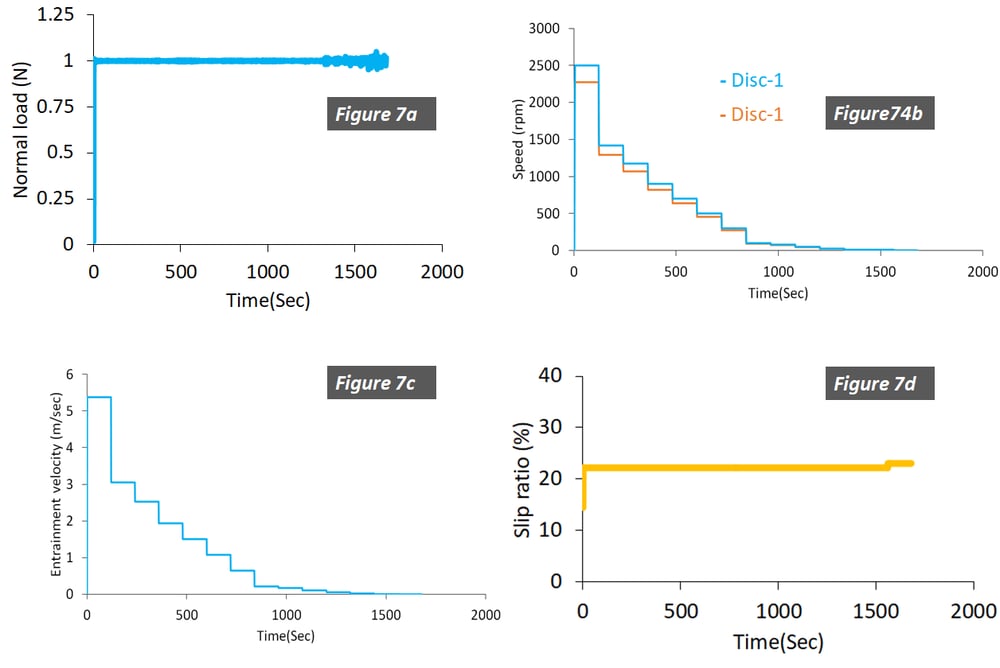 Figure 7a. Constant load of 1 kN Figure 7b. Speed profiles of discs, both decreasing Figure 7c. Decreasing entrainment velocity, 5 m/sec to 1 mm/sec Figure 7d. Constant slip ratio, 22%
Figure 7a. Constant load of 1 kN Figure 7b. Speed profiles of discs, both decreasing Figure 7c. Decreasing entrainment velocity, 5 m/sec to 1 mm/sec Figure 7d. Constant slip ratio, 22%
Friction and lubricant exit temperature plots are shown in Figure 8.
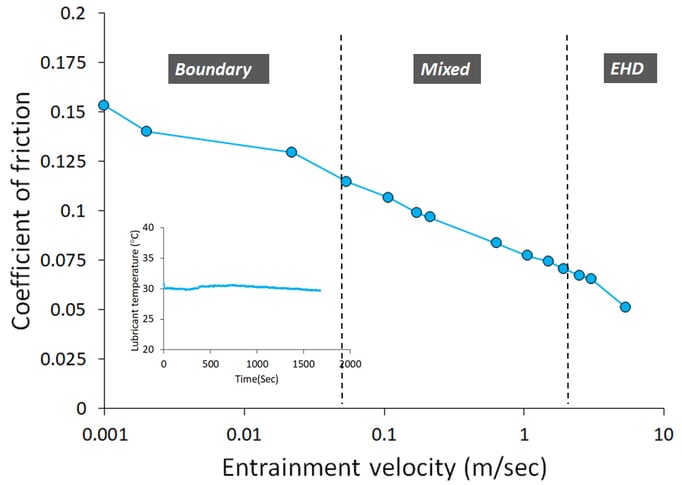 Figure 8. Friction coefficient at 1 kN and Figure 8 (inset) lubricant exit temperature
Figure 8. Friction coefficient at 1 kN and Figure 8 (inset) lubricant exit temperature
Friction increased from 0.05 at 5 m/sec to 0.15 at 1 mm/sec indicating a transition from EHD to mixed and boundary lubrication (Figure 8). A characteristic Stribeck for non-conformal rolling-sliding contacts could be established.
Twin disc is a useful technique to create 3D friction performance maps of base oil with additives such as viscosity index improvers, friction modifiers and anti-wear
For an in-depth description of these results please contact us to discuss more on Traction and Stribeck studies using the Ducom Twin Disc Tribometer.
we are here to help you!
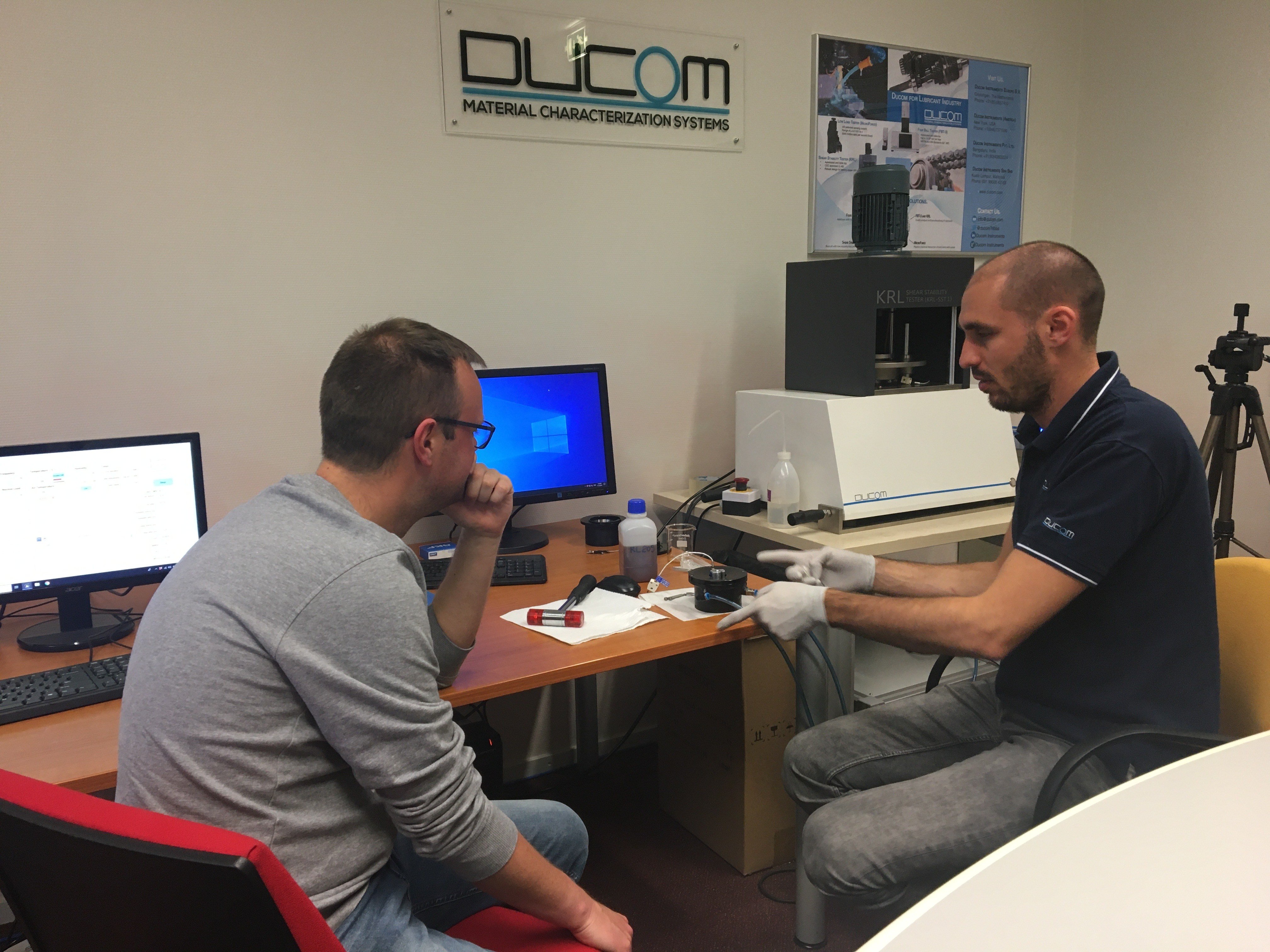
These Stories on friction
USA: +1 (847) 737-1590
India: +91 (80) 4080-5555
Netherlands: +31 (85) 065 74 10